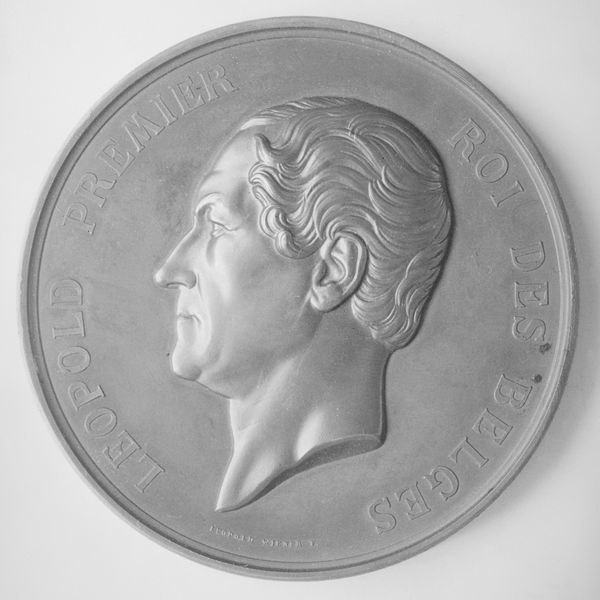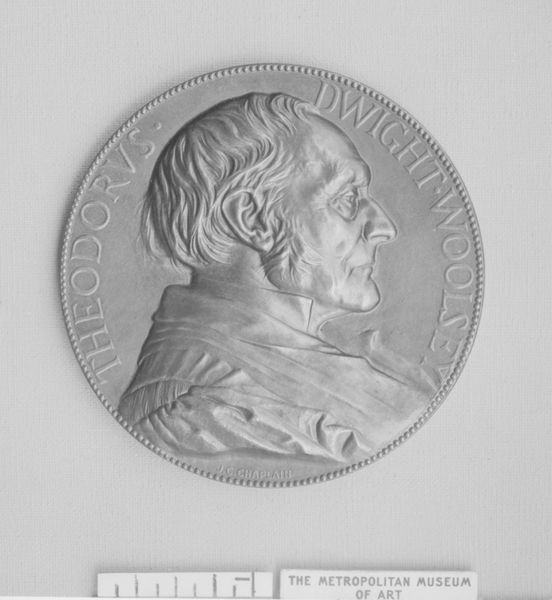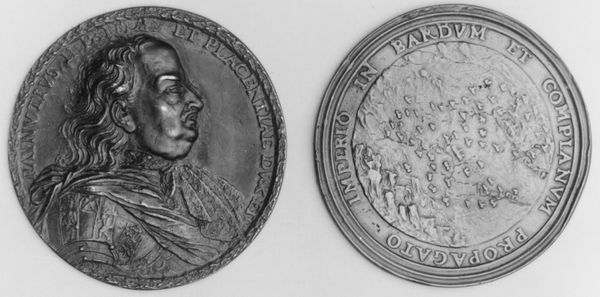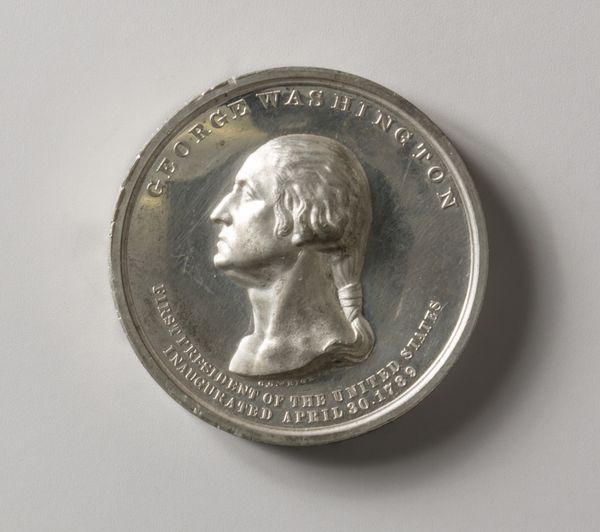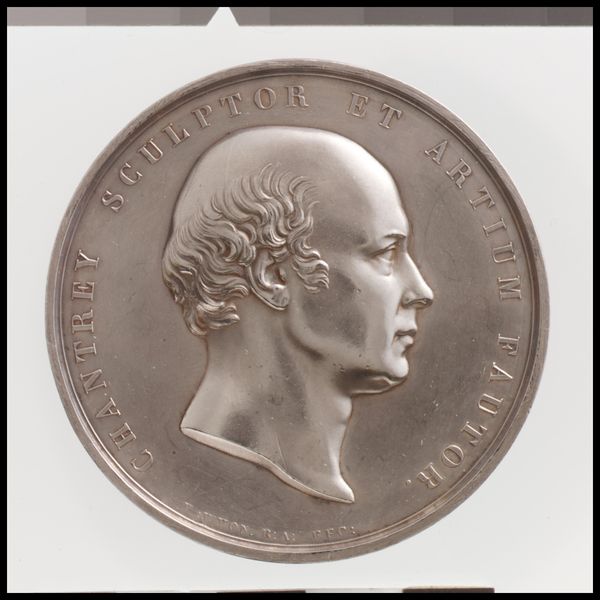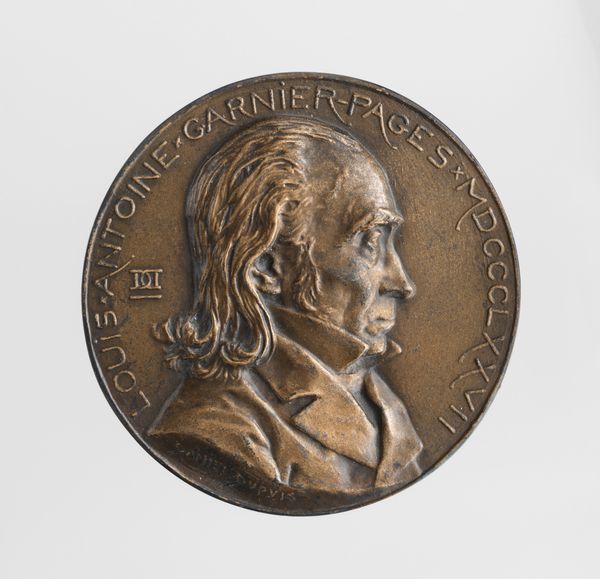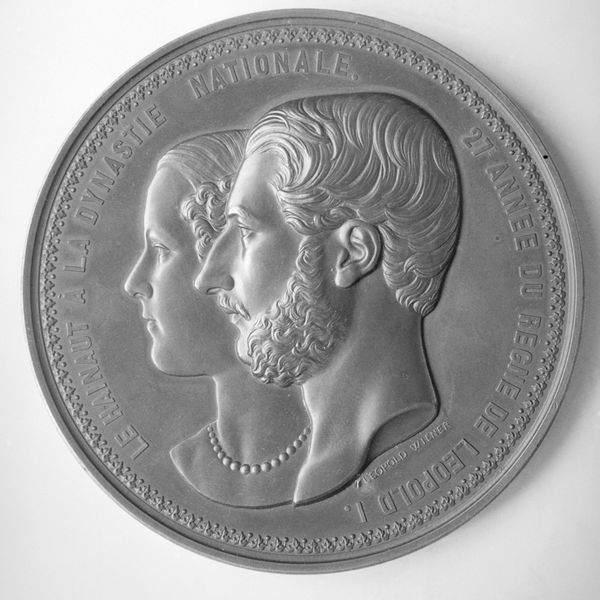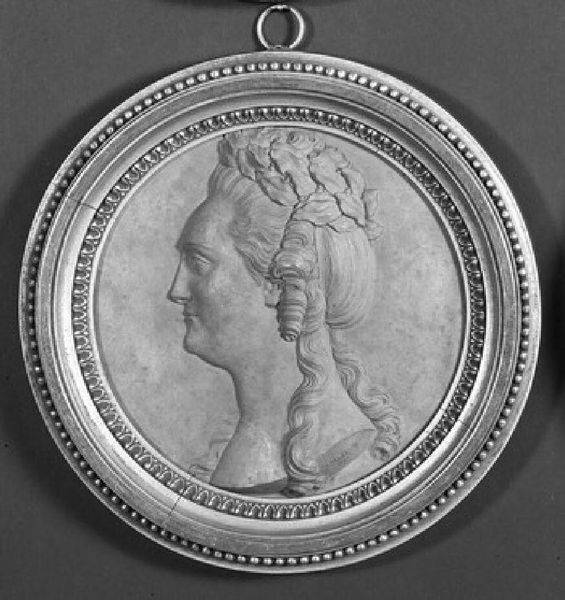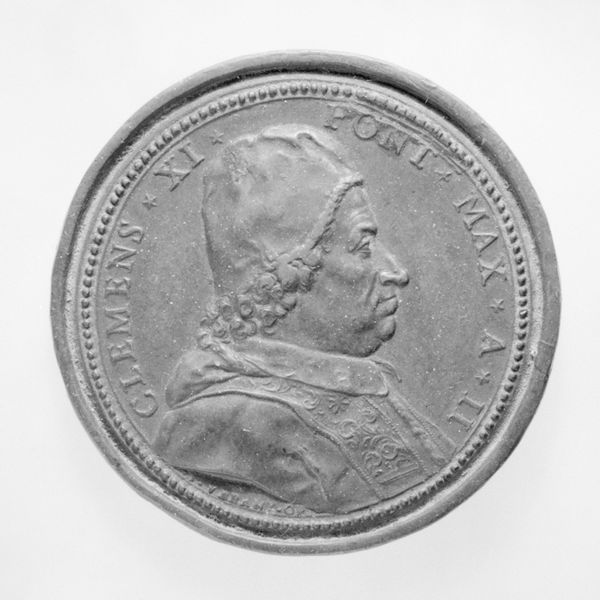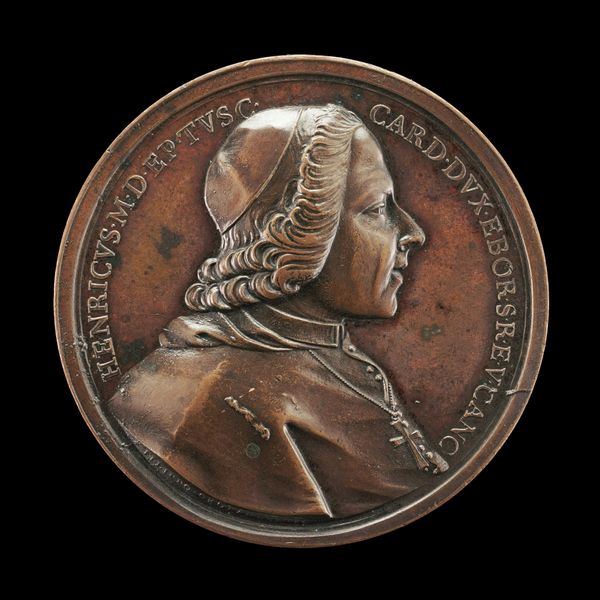
metal, relief, sculpture
#
portrait
#
neoclacissism
#
metal
#
sculpture
#
relief
#
sculpture
#
history-painting
#
profile
Dimensions: Diam. 1 7/8 in. (4.8 cm)
Copyright: Public Domain
Editor: Here we have James Tassie's "Plaque," dating between 1776 and 1830. It's currently at the Met. Carved in metal, this small relief presents a profile of Benjamin Franklin. It feels…very classical in its presentation. What catches your eye most about this piece? Curator: What I find fascinating is how the artist uses a classical visual language – the profile portrait, the Latin inscription – to memorialize a thoroughly modern figure. Consider the choice of Neoclassicism. It evokes the gravitas of ancient Roman portraiture, thereby conferring a kind of timeless significance on Franklin, connecting him to the virtues and wisdom associated with that era. How does that resonance of history strike you? Editor: I hadn't thought about the link to Roman portraiture. I guess I was more focused on Franklin as a historical figure and less on how this object _presents_ him. Does the choice of metal contribute to that sense of importance, or continuity? Curator: Absolutely. Metal, particularly bronze, was the medium of choice for commemorative sculptures in antiquity. Its durability lends the image an air of permanence, suggesting that Franklin's legacy is something that will endure. What's more, profile portraits encourage a level of contemplation that a full-faced view might not. It encourages quiet reflection on character. It's quite deliberate. Editor: That makes sense. The profile *does* encourage a kind of focused viewing... a stripping away of all the noise. It’s very different from how we consume images today. Thanks; I’ll never look at portraiture the same way! Curator: Indeed, it invites a dialogue across centuries about the enduring values we choose to celebrate, the narratives we construct about our past. Food for thought!
Comments
No comments
Be the first to comment and join the conversation on the ultimate creative platform.
